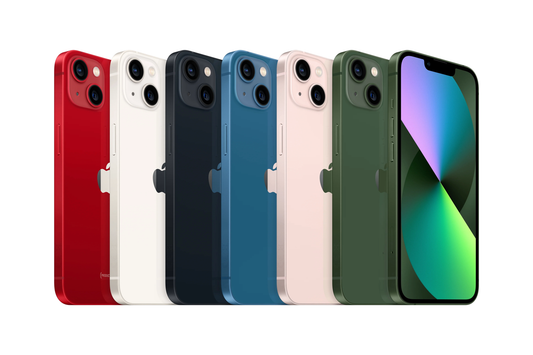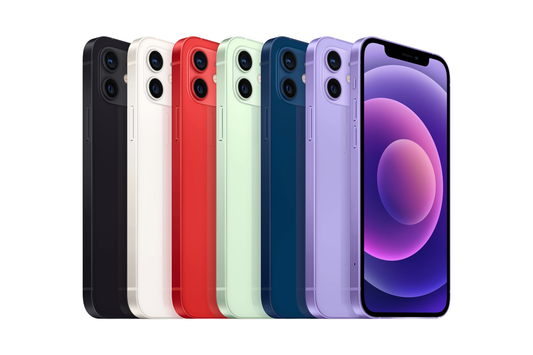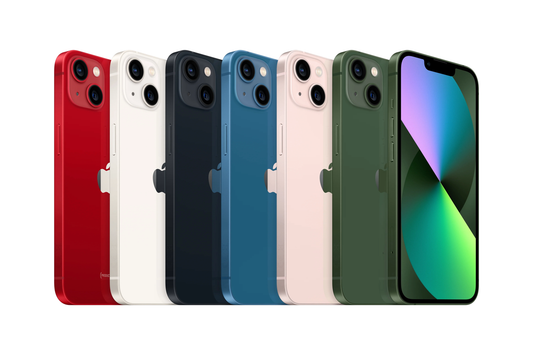Buying a smartphone used to mean choosing between overpriced new models and sketchy second-hand listings. But today’s refurbished market offers a third option, one that’s budget-friendly, high-quality, and surprisingly easy: buying certified refurbished phones. Whether you're looking to save money, reduce e-waste, or just skip the stress of a long-term contract, refurbished phones check all the right boxes.
In this post, we’ll walk through the pros and cons of going refurbished – what to watch out for, what to look for in a seller, and why more Canadians are making the switch.
Pro: Big savings versus new phones
In 2025, the newest iPhone can cost up to $2000. It almost goes without saying that choosing a refurbished phone will save you big bucks.
With refurbished phones, you could save up to 70% compared to a brand-new device. For example, the iPhone XR used to retail at $699 brand-new, and is now available for $229 at Orchard – close 70% off. If you’ve seen the price of groceries these days, you may not need further convincing to keep your hard-earned cash!
Not familiar with Orchard? Allow us to introduce ourselves. We’re a proudly Canadian buyer and seller of high quality refurbished phones, founded and headquartered in Toronto. All our phones are tested in-house by our tech experts with our proprietary 60-point inspection process, to make sure you get a phone that works just like new (guaranteed!). We ship free anywhere in Canada, and offer free returns for 90 days.
Pro: Feel good about a greener choice
Each new iPhone that’s manufactured creates an environmental footprint – and when that phone is thrown away, it leaves destructive e-waste behind. Buying refurbished helps on both fronts, by manufacturing fewer phones and keeping a phone out of the landfill for longer. In 2024 alone, Orchard diverted more than 20,000 phones from landfill and prevented more than 1,700 tonnes of CO2 emissions.
But when smartphone manufacturers tightly control their parts, manuals, and software, repairs and refurbishing can be more difficult and expensive than you’d think. Without access to these repair essentials, many devices couldn’t be restored, dooming them to the dump. That’s why Orchard supports Right to Repair, a grassroots movement pushing for legislative changes requiring companies to share what’s needed to fix their devices.
Pro: Thoroughly tested and repaired
The great thing about a refurbished phone is that it gets you these benefits – lower price, greener Earth – without compromising on quality. Unlike a used phone, which you buy “as-is,” a certified refurbished phone has been thoroughly tested and, if necessary, repaired so it’s good as new. (Learn more about the difference between refurbished and used.) Orchard puts each device through two rounds of 60-point quality inspections, so even the tiniest glitch won’t slip through the cracks.
For a top-quality refurbished phone, look for an R2-certified seller. R2 stands for Responsible Recycling, a universal set of standards for used electronics developed by the nonprofit Sustainable Electronics Recycling International.
R2-certified vendors have to meet strict benchmarks around quality, environmental practices and labor practices, and undergo annual audits. These commitments result in refurbished products you can trust. (And by the way, Orchard is proud to be R2 certified since 2023!)
Pro: Most come with a warranty
Another key difference between a used and refurbished device: since refurbished devices are carefully restored, reputable sellers are happy to stand behind their products with a warranty. At Orchard, we offer a 90-day warranty for all devices, as do Amazon and Best Buy.
The industry standard warranty is 90 days, though you can often pay to extend coverage to a year or more. This should give you peace of mind that even if your phone runs into an issue, you can have it repaired or replaced at no cost. (Extended warranties will often cover accidental damage, too.)
For an in-depth analysis of the pros and cons of various refurbished sellers, including warranty policies, see this article.
Pro: Plenty of models to choose from
One lesser-known perk of buying refurbished is variety. You’re not limited to the latest models – older iPhones that Apple no longer sells might be a better fit for your needs or budget. For example, if you prefer a Home button to Face ID, miss the iPhone Mini or just want a color Apple doesn’t produce anymore, your dream phone could be a refurbished device.
At Orchard you’ll find over 100 different models in stock, with plenty of options for condition, color, and storage size.
Con: Some may have hidden issues – including lower battery life
When you’re buying refurbished, you have to do your research – especially if you’re buying from private sellers or marketplaces, where quality can be hit or miss. Extra care is needed on big marketplaces like Amazon and Reebelo, which act as middlemen for small shops that may have inconsistent practices.
Choosing an R2-certified vendor, as we mentioned above, lets you rest assured that your device was refurbished to the highest standards and should work like new. The R2 certification requires that sellers test 30 key functions (and repair them if necessary) before listing the phone for sale.
One key factor to check is battery health: trusted refurbishers will only sell devices with a battery health of at least 80%. Orchard, for example, only sells phones with a minimum battery health of 83%, so you get all-day battery performance, guaranteed.
Con: Expect cosmetic flaws
While a refurbished phone should always work like new, it may not always look like new. Since you’re giving a device its second home, expect a few signs of wear and tear, such as screen scratches.
Importantly, these cosmetic flaws don’t include cracks in the screen, backplate or camera. Cracks (even on the backplate) are not a merely cosmetic issue, because they detract from functionality and make the phone vulnerable to damage from liquid and dust – not to mention further breakage. No refurbished phone should ever be sold with cracks.
If the appearance of your phone is highly important to you, but you still want all the benefits of a refurbished device, take heart. Many sites let you pay a few extra bucks to get a device that’s as flawless on the outside as it is on the inside.
At Orchard, you can choose from our Like New, Very Good and Good condition tiers. Get a mint-condition phone you’ll never know was refurbished, or save even more if you’re content with a device that shows its pre-loved state.
Con: Newer models are harder to find
If you’re after the newest models at a discount, buying refurbished can be tricky. Refurbishers rely on people trading in their phones, and most folks aren’t going to buy a brand-new phone only to turn around and sell it. Usually, phones start to become available on the refurbished market when they’re about a year or two old.
Orchard has a limited number of iPhone 15 series models in stock – just one generation behind. Browse available iPhone 15 models here.
Con: They might not last as long as new
Refurbished phones should work like new when you buy them and for years to come, but unfortunately their lifespan may not be as long as that of a new phone. One important reason is software compatibility.
As iPhones get older, Apple stops updating them with the newest major iOS version. Most iPhones receive 5 to 7 iOS updates, or 6 to 8 years of support, with an average of 7 years.
Once your iPhone stops getting major iOS updates, it gradually loses access to new app features and compatibility. Typically, you don’t want to be more than one major iOS update behind – what we call the “Goldilocks Zone.”
App developers often support the current and previous iOS versions, so being one step behind usually means all your apps continue to run smoothly. Similarly, Apple seems to prioritize full security support for the two most recent iOS versions, though older ones may get limited patches.
If you have a specific app in mind, try our handy app compatibility checker to see which models will support it.
Con: You need to buy from a trusted seller
When you’re buying refurbished, an iPhone is not just an iPhone. Refurbished phones come from a variety of different outfits, with different standards and practices. The seller you choose can make the difference between a phone that’s the next-best thing to new, and an Apple that’s more like a lemon.
Do your research by carefully reading individual reviews (not just aggregate ratings or AI review summaries, which are prone to manipulation). Make sure you understand the warranty and return policy, and know what standards are used for testing and repairs.
Be especially mindful about Kijiji and Facebook Marketplace phones: though undeniably cheaper, these devices are used, not refurbished. You could be buying a device that has unidentified problems or even one that’s stolen – not to mention the inconvenience and risk of making a major purchase from a stranger.
Want to arm yourself with knowledge? Check out our complete rundown of the major players in refurbished phone sales in Canada.
Conclusion
Refurbished phones are definitely worth it! They’re a smart, cost-effective choice to get a reliable phone without paying full price.
Third-party certifications like R2 provide standards for refurbishing and help customers find high-quality refurbished devices. By doing your due diligence to find a trustworthy seller, you can enjoy the same peace of mind you’d expect from buying new.
These days, the latest iPhones offer only small improvements over the previous generation. Techies might drool over every tiny feature upgrade, but most people will be very happy with a phone that’s two generations old or even more. The only difference you’ll notice is the extra cash in your wallet.








